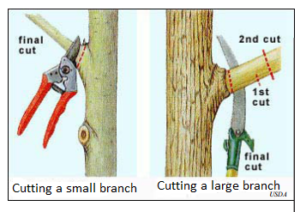Home Insteading With Cooperative Extension (Week 20)
go.ncsu.edu/readext?717029
en Español / em Português
El inglés es el idioma de control de esta página. En la medida en que haya algún conflicto entre la traducción al inglés y la traducción, el inglés prevalece.
Al hacer clic en el enlace de traducción se activa un servicio de traducción gratuito para convertir la página al español. Al igual que con cualquier traducción por Internet, la conversión no es sensible al contexto y puede que no traduzca el texto en su significado original. NC State Extension no garantiza la exactitud del texto traducido. Por favor, tenga en cuenta que algunas aplicaciones y/o servicios pueden no funcionar como se espera cuando se traducen.
Português
Inglês é o idioma de controle desta página. Na medida que haja algum conflito entre o texto original em Inglês e a tradução, o Inglês prevalece.
Ao clicar no link de tradução, um serviço gratuito de tradução será ativado para converter a página para o Português. Como em qualquer tradução pela internet, a conversão não é sensivel ao contexto e pode não ocorrer a tradução para o significado orginal. O serviço de Extensão da Carolina do Norte (NC State Extension) não garante a exatidão do texto traduzido. Por favor, observe que algumas funções ou serviços podem não funcionar como esperado após a tradução.
English
English is the controlling language of this page. To the extent there is any conflict between the English text and the translation, English controls.
Clicking on the translation link activates a free translation service to convert the page to Spanish. As with any Internet translation, the conversion is not context-sensitive and may not translate the text to its original meaning. NC State Extension does not guarantee the accuracy of the translated text. Please note that some applications and/or services may not function as expected when translated.
Collapse ▲Family and Consumer Sciences at Home
Mary Morris, Family and Consumer Sciences Agent
Keeping Safe, Still Very Important
As COVID-19 cases have grown in our area in the last few weeks you may actually know someone who either has symptoms or has tested positive? Don’t forget how important it is to follow those CDC Guidelines. If you have been in close contact with someone who has had symptoms or tested positive make sure to follow the guidelines below.
Basically, use good common sense and know what to do. If you have any doubt that you have symptoms or have been exposed stay home. Quarantine yourself at home even if you don’t have symptoms. It’s better to be safe than sorry. Try to keep your face to face contact with people to a bare minimum. I can’t stress enough to wear your masks and wash hands. Follow these CDC Guidelines when performing these tasks.
Running Essential Errands
What you need to know:
- Stay home if sick.
- Use online services when available.
- Wear cloth face coverings in public settings and when around people who don’t live in your household, especially when other social distancing measures are difficult to maintain.
- Use social distancing (stay at least 6 feet away from others).
- Use hand sanitizer after leaving stores.
- Wash your hands with soap and water for at least 20 seconds when you get home.
Getting Gas
- Use disinfecting wipes on handles and buttons before you touch them (if available).
- After fueling, use a hand sanitizer with at least 60% alcohol. Wash your hands for at least 20 seconds when you get home or somewhere with soap and water.
Click here for more information on Preventing the Spread.
Horticulture at Home
Katy Shook, Area Horticulture Agent
Pruning Plants
As gardeners, we’re constantly manipulating nature. It may be for the purpose of recreation, food, aesthetics, safety or hobby, but it is usually necessary. Pruning is no exception. At this time of year plants are often stretching their limits. Spring rains and summer temps have pushed plants beyond what we were expecting, and it’s time to wrangle things back into control. Before you get out those pruners, please keep these tips in mind.
Heavy pruning is best reserved for winter months. Light pruning (a branch here or there) can be done at any time of year. However, if you’re going to end up pruning more than one-third of the plant away, you may want to wait until the plant is dormant. This will help the plant heal and recover. February is usually a good month for heavy pruning.
The plant will grow back. Despite our best efforts, plants have a predetermined habit that they’re going to reach; this includes size. A tall tree cannot be conformed to a short size, and an upright habit cannot be transformed into a weeping form. Try to guide the plant so that size does not create conflict. Prune away branches that are directed towards the house, or ones that are in the way of a lawnmower. Worst case scenario, consider removing the plant and replacing with a more appropriate size. Dwarf forms are available for most plants.
Use the right tools. Clean, sterilized tools will promote plant health. Use hand-pruners on smaller stems and loppers or hand-saws on larger branches.
Prune at the right place. There are two strategies for pruning: To permanently remove a branch from a plant, it needs to be cut at the branch collar. This is the area where the branch extends from the main trunk or another limb (see image). To encourage rejuvenation, plants can be pruned anywhere along the stem. Hidden buds will emerge and push new growth out from around the cut. Always remove dead, diseased, or broken limbs.
For more information about pruning, contact the Ask A Master Gardener Helpline at (252) 482-6585.




